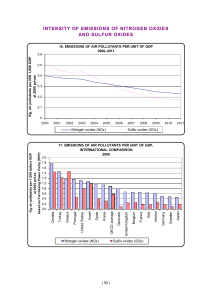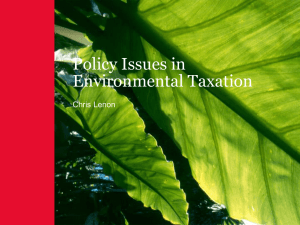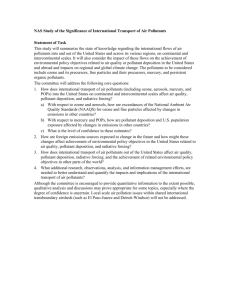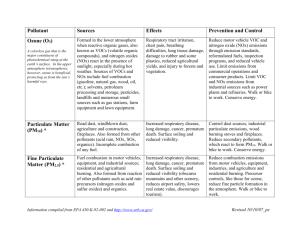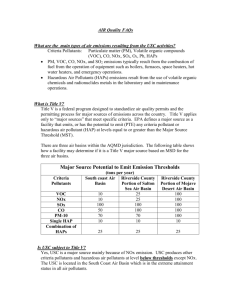Relevance of the indicator to sustainable development
advertisement
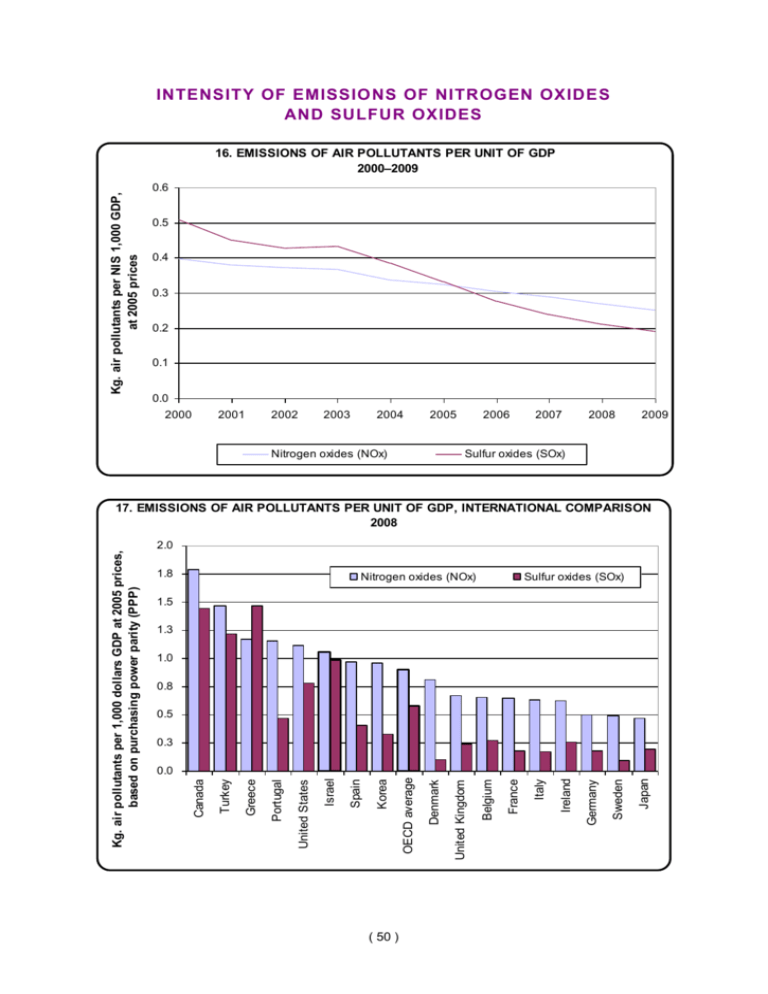
INTENSITY OF EMISSIO NS OF NITROGEN OXIDES AND SULFUR OXIDES Kg. air pollutants per NIS 1,000 GDP, at 2005 prices 16. EMISSIONS OF AIR POLLUTANTS PER UNIT OF GDP 2000–2009 0.6 0.5 0.4 0.3 0.2 0.1 0.0 2000 2001 2002 2003 2004 2005 Nitrogen oxides (NOx) 2006 2007 2008 2009 Sulfur oxides (SOx) 2.0 1.8 Nitrogen oxides (NOx) Sulfur oxides (SOx) 1.5 1.3 1.0 0.8 0.5 0.3 ( 50 ) Japan Sweden Germany Ireland Italy France Belgium United Kingdom Denmark OECD average Korea Spain Israel United States Portugal Greece Turkey 0.0 Canada Kg. air pollutants per 1,000 dollars GDP at 2005 prices, based on purchasing power parity (PPP) 17. EMISSIONS OF AIR POLLUTANTS PER UNIT OF GDP, INTERNATIONAL COMPARISON 2008 Description of the indicator The indicator calculates the quantity of emissions of pollutant in Israel per unit of production. It shows the ratio of the total sulfur oxide (SOx) and nitrogen oxide (NOx) emissions to the gross domestic product (GDP) in Israel in a given year. The ratio is calculated by dividing the emissions of pollutant by NIS 1,000 of GDP at constant prices. Relevance of the indicator to sustainable development The emission of pollutants into the air, as a result of energy consumption in transportation and industrial processes, is the main cause of air pollution. Air pollution causes harm to human health and ecosystems, and, as a result, also to the economy and society. Poor air quality can have substantial repercussions for achievement of objectives of sustainable development. Air pollution problems have economic and social repercussions such as the cost of health services, the need for rehabilitation of structures, decline in agricultural production, and general impairment of the quality of life. The central objective is decoupling emission of the pollutants from the economic development and growth reflected by the GDP. Thus, the lower the value of the indicator, the stronger the trend of decoupling. The objectives are achieved through emission standards and their supervision, technological improvements, energy efficiency, and a sustainable transportation policy. Selected findings In 2009, the ratio of nitrogen oxide emissions to the GDP was 0.25 kg. per NIS 1,000, compared to 0.4 kg. per NIS 1,000 in 2000. In 2009, the ratio of sulfur oxide emissions to the GDP was 0.2 kg. per NIS 1,000, compared to 0.5 kg. per NIS 1,000 in 2000. The data demonstrate that along with the absolute decrease in the quantity of emissions of air pollutants, there was also a trend of decoupling between the increase in GDP (an increase of 30% since 2000) and air pollutant emissions. Despite the decreases in emissions and the trend of decoupling between the emissions and economic growth, pollutant emission intensity in Israel (1.06 kg. NOx per 1,000 dollars GDP and 0.98 kg. SOx per 1,000 dollars GDP) is relatively high compared to this intensity in most OECD countries, and higher than the average in the OECD countries. ( 51 )
